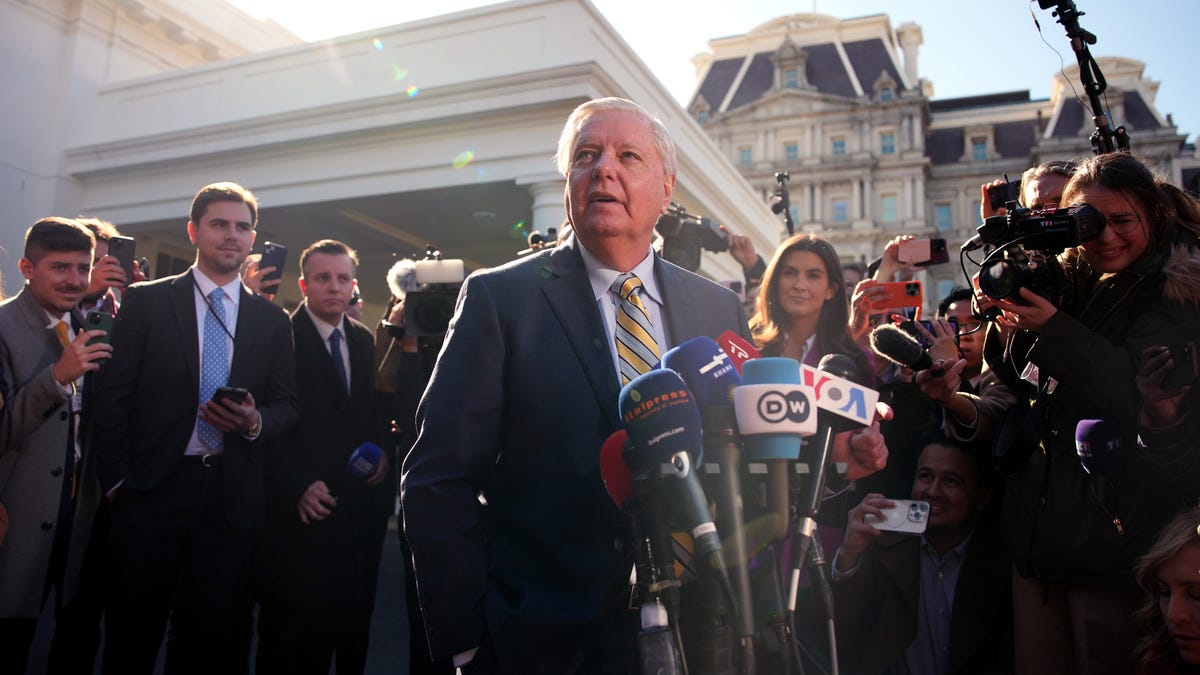Here’s what imports will be most affected by President Trump’s tariffs
President Donald Trump’s new tariffs include additional tariffs on some of the world’s biggest exporters of clothing, electronics and more.
WASHINGTON – Senate Republicans are planning to take a big step forward in their effort to put President Donald Trump’s agenda into law – and they’re breaking some norms to do it.
On Wednesday, the chamber’s GOP leaders unveiled a new version of the blueprint for sweeping legislation that will eventually include Trump’s priorities for border security, energy policy, and taxes.
Trump and Republican lawmakers want to make the tax cuts implemented during Trump’s first term permanent, a massively expensive endeavor that would add an estimated $3.8 trillion to the deficit over the next 10 years.
To avoid drawing attention to that price tag, they are treating the tax cuts – which expire at the end of the year – as the norm or “current policy,” so extending them would appear to cost nothing. Deep cuts to Medicaid and other programs are still on the table, but are less clear under the Senate’s instructions, which does not require significant spending cuts like its House counterpart.
And lawmakers plan to bypass the Senate’s neutral arbiter who would typically determine whether such maneuvers are allowed under the chamber’s complex rules. If that becomes an established precedent it could allow the majority to bypass the rules whenever it likes.
“I have determined that current policy will be the budget baseline regarding taxation,” said Sen. Lindsey Graham, R-S.C., who was given the final say over how to interpret the rules. “This will allow the tax cuts to be permanent – which will tremendously boost the economy.”
Senators plan to begin considering the new blueprint Thursday evening with the hopes of having it ready for the House to approve when it returns on Monday. But the House and Senate remain divided over how much to cut spending, setting up a likely fight between the two chambers.
Here’s what to know about where Trump’s agenda stands on Capitol Hill.
What’s in the Senate blueprint?
The Senate’s plan would make the 2017 tax cuts permanent and allow for an additional $1.5 trillion in tax cuts, leaving room for Trump’s plans to eliminate taxes on tips and overtime and the administration’s other tax priorities.
It requires virtually no spending cuts, but has a nonbinding target of eventually finding $2 trillion in savings over 10 years.
Those cuts may impact Medicaid, the program that provides health benefits to 72 million low-income Americans, and food benefit programs, because fiscal conservatives in both chambers are pushing for deep deficit reductions to offset spending on tax programs.
The Senate proposal includes language noting that lawmakers plan to abide by Trump’s promise not to cut Social Security, Medicare, and Medicaid benefits while protecting them from “waste, fraud, and abuse,” though it is not binding. That language is meant to imply that Medicaid spending could be cut, but that the cuts wouldn’t reduce benefits.
However, analysts warn the possible cuts dwarf the estimated amount of waste, fraud and abuse occurring in the Medicaid system, making it extremely difficult to meet the House’s $880 billion proposed reduction without impacting benefits.
The Senate plan would also raise the debt ceiling by $5 trillion, which would avoid a looming default on the federal debt and help Republicans avoid negotiating on the extension with Democrats.
If the debt ceiling was not included in the GOP bill, Republican lawmakers argue, they would have to raise it with Democratic help, giving them policy concessions in return.
The Senate’s plan allows the House to keep their blueprint passed earlier this year, which required finding at least $1.5 trillion in spending cuts over the next 10 years – creating a plan that will allow two separate policy proposals to be created in each chamber.
However, both the House and Senate will eventually need to find the same level of spending and cuts in order for the legislation to become law. Under the budget plan the Senate is considering this week, both chambers would have to finalize their proposals by May 9.
Big fights ahead
The Senate Republicans’ plan is already getting pushback on all sides: From their House counterparts, from fiscal conservatives within their own ranks, from Republicans worried about Medicaid cuts, and from Democrats.
Democrats have called the Senate’s plan a “gimmick” that would “upend decades of precedent” and cost Americans trillions of dollars.
“Employing this unprecedented gimmick would upend budget law, erode the remaining fiscal guardrails in the budget reconciliation process, and result in trillions of dollars more in federal debt,” wrote Senate Democratic Leader Chuck Schumer, D-N.Y. and top Democrats on the Senate Finance and Budget committees in a Monday letter to Senate Majority Leader John Thune, R-S.D.
Democrats have also repeatedly hit Republicans for pursuing an extension of the 2017 Tax Cuts and Jobs Act, which lowered taxes for all income groups but disproportionately helps higher-income earners.
The House Republican budget leader has argued the Senate plan will result in a massive increase in the deficit, because the plan’s lack of mandatory spending reductions will make it easy for lawmakers to avoid potentially painful and unpopular cuts.
“If they’re not enforceable then, more than likely, it won’t happen,” Budget Committee Chair Jodey Arrington, R-Texas, told Politico.
Fiscal hawks in both chambers are already worried that Arrington is right, and that counting the cost of Trump’s 2017 taxes as $0 will result in a final bill that contributes to the ballooning federal deficit.
And some GOP lawmakers remain concerned that the proposal will eventually lead to cuts to Medicaid.
Sen. Josh Hawley, R-Mo., has been a vocal advocate for protecting Medicaid and said he isn’t sure yet whether he can support the plan put forward by his own party. “The Senate is being asked to vote on, to approve instructions to the House that say ‘cut $880 billion from, basically, Medicaid,'” he said.
